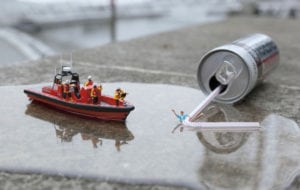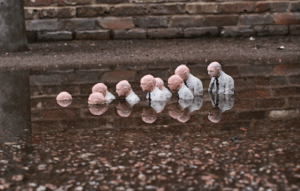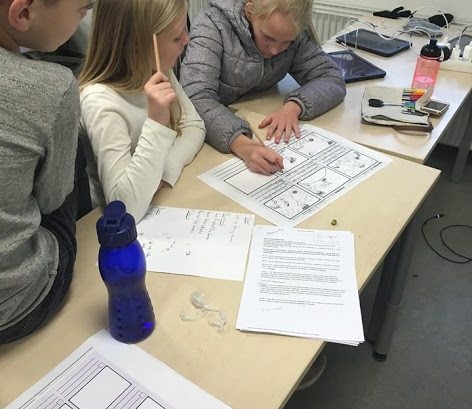Welcome to Unit 1 Seeing STEAM: What if we could change size?
On this page we will review some key resources from the Seeing STEAM team exploring size through magnification and optical illusion techniques, which we hope will give you inspiration to plan a relevant lesson with your own learners.
After you have reviewed these materials click on Mark Complete at the bottom of this page to move on to Example 2
Case study and lesson plan
Idea to Explore
How would the world be perceived if you changed size? Would it look different? Are there ways to capture this point of view?
Introductory video
Methodology
The sections below – Discover, Define, Develop and Deliver – align to the design thinking model:
Discover
First trigger
As a trigger to introduce the question ‘What if we could change size?’, we used the story of “De kleine Johannes” by Frederik van Eeden. In this nineteenth century fairy tale, we meet Johannes. Johannes is a little boy who lives together with his father, his dog and his cat in an old house with a big garden. One night he falls asleep in a boat in the pond of his garden. In his dream, a dragonfly becomes an elf called Windekind. The Elf Windekind shrinks Johannes and takes him on a trip to a fantastic fantasy world. Together they visit a school for crickets and a party in a rabbit hole.
The pupils used this story to start thinking about size and to come up with similar stories about shrunken (or enlarged) people or animals.
Another suitable story could be “Gulliver’s Travels” by Jonathan Swift.
Second trigger
As a second trigger, we introduced a selection of images from artists who work with miniature figures eg. Jaune, Slinkachu, and Isaac Cordal (see links in Resources Needed). The pupils were encouraged to investigate different works of art and reflect on how being of a different size would affect how we view the world.



Third trigger
The third trigger focused on optical illusions. The pupils watched different movies and pictures of optical illusions and were given information on how these optical illusions were created.
Define
In the defining phase, the pupils explored the school, the playground, and the city using magnifying apps and cameras and came up with an idea they wanted to develop.
Develop
After exploring their surroundings through using magnifying apps and cameras and next finding out how to create optical illusions and miniature images, the pupils used the input to create their own unique images and videos.
Deliver
The results were images and videos with the pupils’ own miniature figures or optical illusions.

International Collaboration
The countries sent magnified images to each other and tried to guess what the original objects were. Later, the pupils had a Skype conversation and exchanged their ideas and thoughts about the pictures and the miniature people. They also talked about artists from each other’s countries.
Resources Needed
To get the pupils to think about what things look like when we see them magnified, we used this ThingLink: https://www.thinglink.com/scene/984848981831974915 Hover over the images to find out what they are.
Below are the links for the artists who work with miniature figures. Be aware that you will need to select appropriate images from their work to share with your pupils:
Isaac Cordal: http://cementeclipses.com/
Jaune: https://thinkspaceprojects.com/artists/jaune/
Slinkachu: https://slinkachu.com/
STEM to STEAM analysis
Science: Investigating different types of optic lenses, such as convex lenses that converge parallel light rays to a focal point and concave lenses that diverge parallel light rays away from each other. Using microscopes.
Technology: Using a camera to create optical illusions. How do (photo) lenses work? Making green screen films.
Engineering: Using distance to change and relate proportions and size.
Art: We focused on artists who work with mini figures, like Slinkachu, Jaune and Isaac Cordal to inspire storytelling through film. Creating optical illusions through photographic techniques. Using close-up photographs to inspire physical art.
Mathematics: Scale, proportions, using apps to measure distance.
Padlet – Ideas
Below is a Padlet of examples to help you to think about how you could develop this theme in your own teaching context.
You can open the Padlet in a new tab if you prefer: https://padlet.com/dlaberasmus/Unit1SeeingSTEAMWhatifwecouldchangesize
After you have reviewed these materials click on Mark Complete at the bottom of this page to continue.




